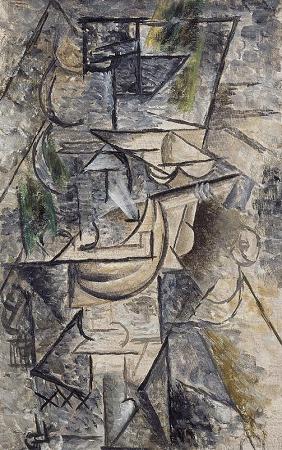Genre with Mandolin. A mandolin is a stringed musical instrument in the lute family and is usually plucked with a plectrum. It commonly has four courses of doubled metal strings tuned in unison, although five and six course versions also exist. The courses are typically tuned in a succession of perfect fifths, with the same tuning as a violin. It is the soprano member of a family that includes the mandola, octave mandolin, mandocello and mandobass. There are many styles of mandolin, but three are common, the Neapolitan or round-backed mandolin, the carved-top mandolin and the flat-backed mandolin. The round-back has a deep bottom, constructed of strips of wood, glued together into a bowl. The carved-top or arch-top mandolin has a much shallower, arched back, and an arched top, both carved out of wood. The flat-backed mandolin uses thin sheets of wood for the body, braced on the inside for strength in a similar manner to a guitar. Each style of instrument has its own sound quality and is associated with particular forms of music. Neapolitan mandolins feature prominently in European classical music and traditional music. Carved-top instruments are common in American folk music and bluegrass music. Flat-backed instruments are commonly used in Irish, British and Brazilian folk music. Some modern Brazilian instruments feature an extra fifth course tuned a fifth lower than the standard fourth course. Problems playing this file? See media help. Problems playing this file? See media help. Other mandolin varieties differ primarily in the number of strings and include four-string models such as the Brescian and Cremonese, six-string types such as the Milanese, Lombard and the Sicilian and 6 course instruments of 12 strings such as the Genoese. There has also been a twelve-string type and an instrument with sixteen-strings. Much of mandolin development revolved around the soundboard. Pre-mandolin instruments were quiet instruments, strung with as many as six courses of gut strings, and were plucked with the fingers or with a quill. However, modern instruments are louder, using four courses of metal strings, which exert more pressure than the gut strings. The modern soundboard is designed to withstand the pressure of metal strings that would break earlier instruments. The soundboard comes in many shapes, but generally round or teardrop-shaped, sometimes with scrolls or other projections. There are usually one or more sound holes in the soundboard, either round, oval, or shaped like a calligraphic. A round or oval sound hole may be covered or bordered with decorative rosettes or purfling. See: History of the mandolin. Mandolins evolved from lute family instruments in Europe. Predecessors include the gittern and mandore or mandola in Italy during the 17th and 18th centuries. There were a variety of regional variants, but two that were widespread included the Neapolitan mandolin and the Lombardic mandolin. The Neapolitan style has spread worldwide. Mandolins have a body that acts as a resonator, attached to a neck. The resonating body may be shaped as a bowl or a box. Traditional Italian mandolins, such as the Neapolitan mandolin, meet the necked bowl description. The necked box instruments include the carved top mandolins and the flatback mandolins. Strings run between mechanical tuning machines at the top of the neck to a tailpiece that anchors the other end of the strings. The strings are suspended over the neck and soundboard and pass over a floating bridge. The bridge is kept in contact with the soundboard by the downward pressure from the strings. The neck is either flat or has a slight radius, and is covered with a fingerboard with frets. The action of the strings on the bridge causes the soundboard to vibrate, producing sound. Like any plucked instrument, mandolin notes decay to silence rather than sound out continuously as with a bowed note on a violin, and mandolin notes decay faster than larger stringed instruments like the guitar. This encourages the use of tremolo to create sustained notes or chords. The mandolin's paired strings facilitate this technique: the plectrum strikes each of a pair of strings alternately, providing a more full and continuous sound than a single string would.
more...






